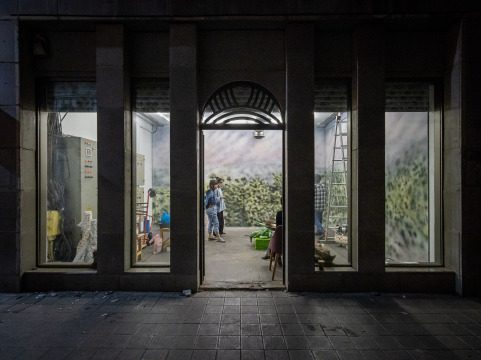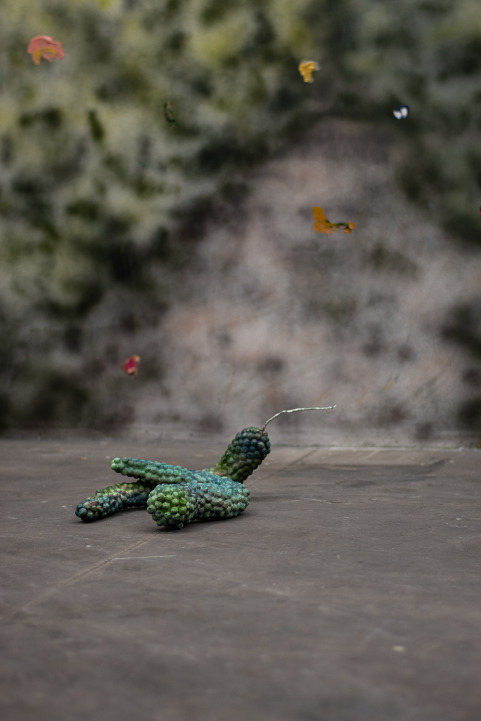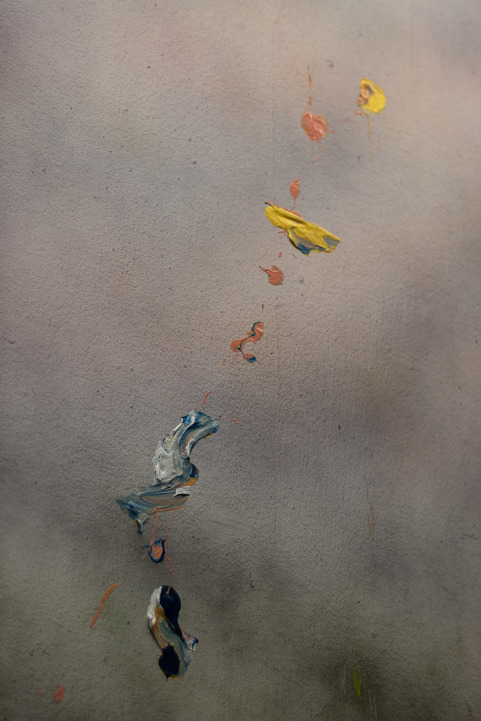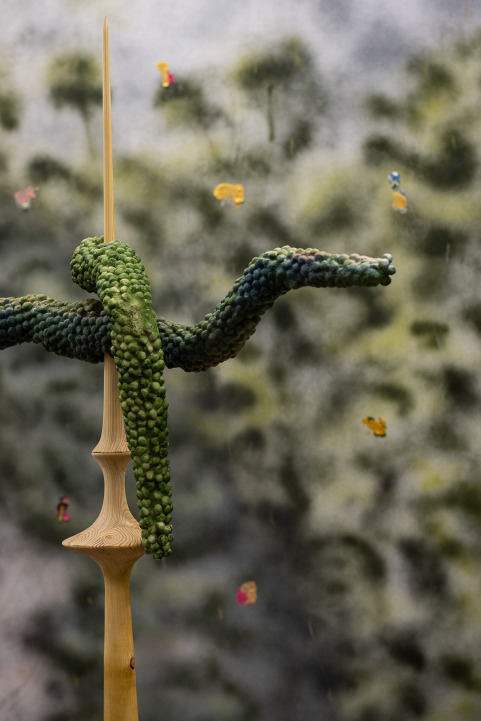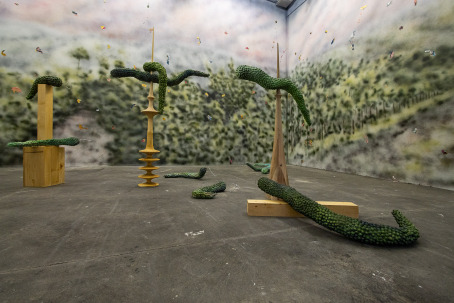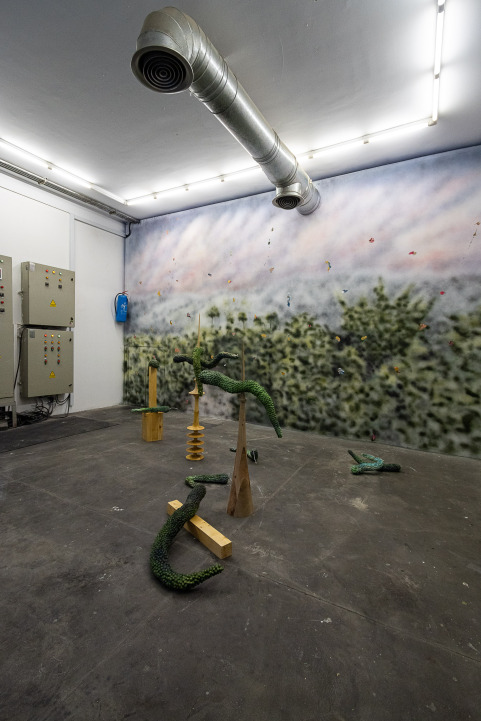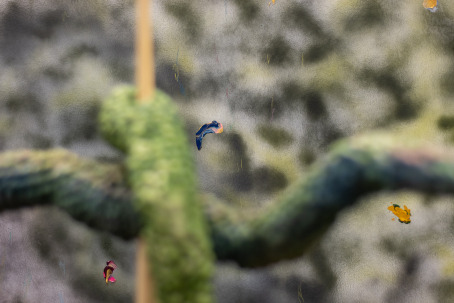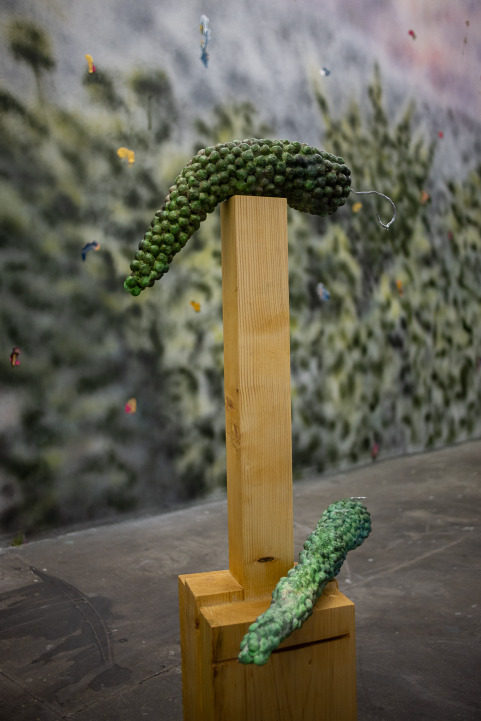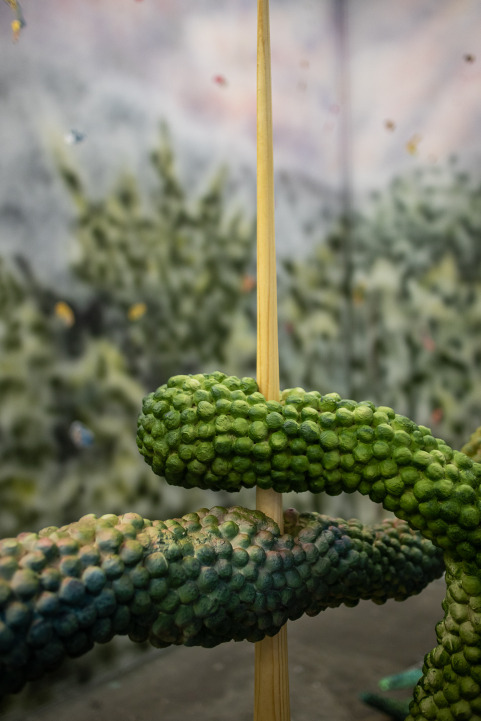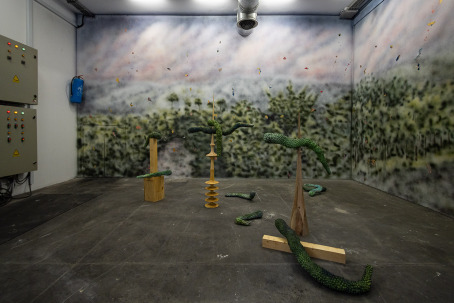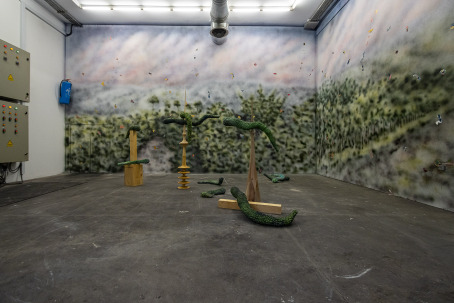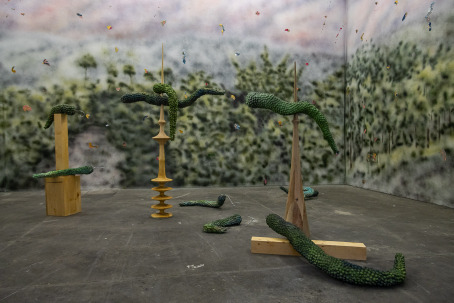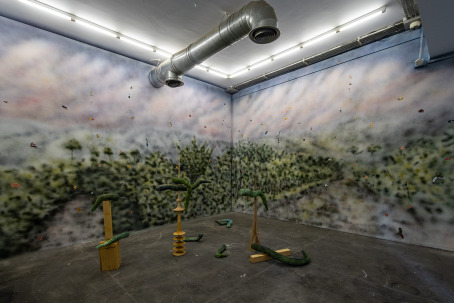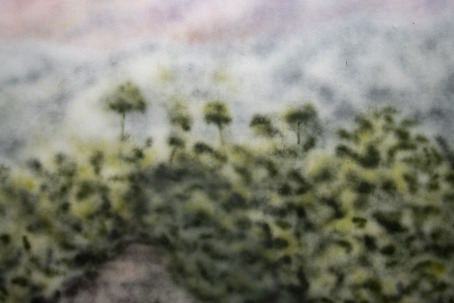Wrinkles Wrapped in Years: Three Zones of Experience An Installation by Minoo Yalsohrabi and Salé Sharifi at Electric Room Ashkan Zahraei It seems vital to think about collecting one’s memories, making an outline to understand the sequence of things and how they have influenced each otter, under the weight of their own persistence. However, images often fly away and blur out in the distance, escaping the grasp of an ephemeral moment of recollection. About fourteen years ago, Salé and I took an unlikely assignment that included painting a mural in a kindergarten in the east of Tehran. We were young, aspirational and ready to take on any task thrown at us. Arriving at the place, we spent some time exploring the books on the shelves, looking at their illustrations with an air of criticism. The mural didn’t end up meeting the expectations of the clients, and even that is a euphemism. We had taken on different paths at the time —Salé seemed intent on pursuing a career in painting while I was, much like today, determined in my perpetual uncertainty. To both of us, failure seemed like an unexpected conclusion. We remained adamant, starting up a studio to both discover the paths our simpler perspectives provided, and explore the extents of frustration in each and every one. The more I look in between the wrinkles of the years past, and the more details I remember, the less focus I can sustain on individual events, particulate sensations, and aerosolized consequences. Every time I aim to make a journey into earlier years when the objectives were far more prominent than the trials, I cower into a fictional quiet room, sheltered from additional input, with intermediary walls keeping the outlooks at a distance. About seven years ago, I visited a vast vineyard near the ocean. The vines extended into the distance and the blue of the waters merged with the azure of the sky. Everything, even the closest encounters, were far away, and no harm could find its way into the present experience. As I felt more comfortable walking within parallel aisles of vines, I focused on how each grape cluster was made out of individual berries. I started imagining a loop in which each berry would accommodate itself within the cluster, while another one left the crowd. It was a slow delicate process, bitter and sweet. The image scaled itself up to the vines, then to the rows, and finally to the vista, and the small jiggles of each cluster repopulating became a rhythmic vibration that blurred out the landscape. A few years ago, I would say maybe four, Minoo was sketching out a series of paintings and installations that would sit themselves most comfortably within a kitchen. It wasn’t any kitchen, but rather an uncanny domestic establishment that she had imagined, hosting a most obscurely personified set of storages, appliances, tools, utensils, designated zones, as well as ingredients, fruiting trees and plants, and flowers. The paintings would rest around the counters, cupboards and work surfaces, while grape and cucumber vines extended their arms around to ensure everything was in order. True functions had been tucked away under the glaze of fresh coats of paint and delicately-rounded grape berries. I invited the two to share their settings at Electric Room: one’s sharply-delineated ‘kitchen’ meeting the other’s fainted landscape viewed from behind a wall of frantic yet subtle intrusions. Salé’s landscape wraps around one’s perspective, blurring out vantage points while creating a barrier, an interceder interface, between the space and the fading vista. Minoo’s installation isolates a fragment, creating a third zone of experience. Immediate yet imaginary, the installation mirrors what could be well within the possible boundaries of the blurred out landscape, or a reconstituted form assembled by bringing together the wrinkled acts of recall wrapped in between years.
